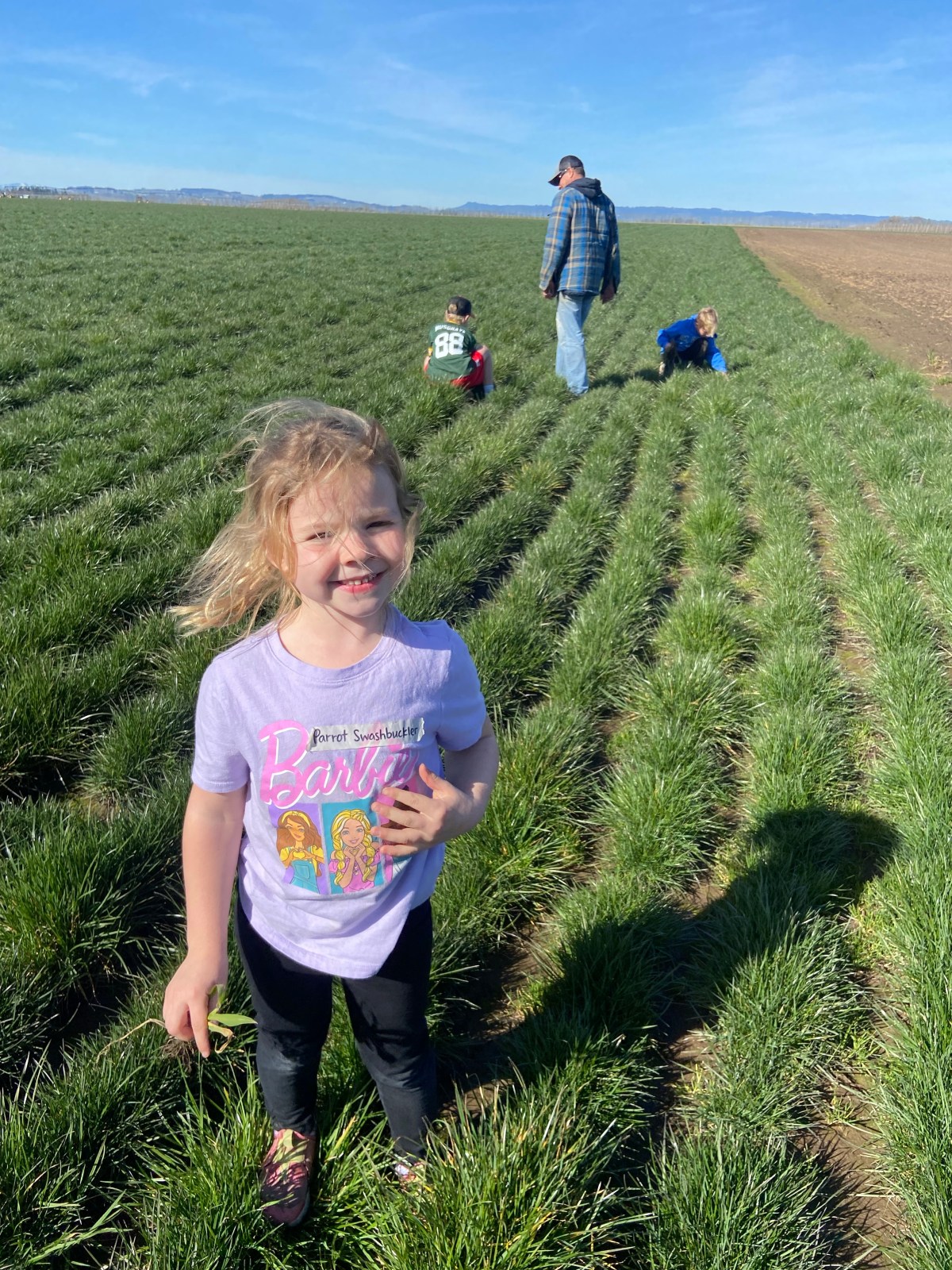We have hit the “it’s a good day to go get a tractor stuck” weather! Woo hoo!!! For those of you who don’t farm that means the sun has come out and every farmer is rushing around thinking now is the time to get all the things done. Meanwhile Mother Nature has dumped quite a bit of moisture which is sitting in the soil just waiting for you to give her a go so she can laugh.
I would bet we could queue up a few buried or at least stuck-in-the-mud tractor pictures this coming weekend. I’m hoping we aren’t one of them because we’ve all been there. We do have some radish we would love to get planted in this beautiful window of weather; but like I said, sometimes we get a little excited and things don’t go our way and it’s just not time and the soil isn’t ready.

So until then we can still get lots done in this sunshine. This week we took the kids out to pull wheat out of some grass seed fields. I told them it would take 5 minutes…and an hour later we were back home. So they are slowly getting the language of all farmers engrained in their young minds. Always bring a lunch folks.
I’m sure if you’re in any sort of farming area here in the Willamette Valley you’ll see a lot of activity in the coming days. Keep an eye out on the roads for SMV’s (slow moving vehicles) and please be patient, we are as excited as the rest of you for this spring sunshine to hit; our vehicles just drive a little slower.










